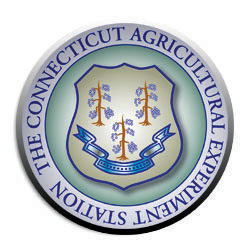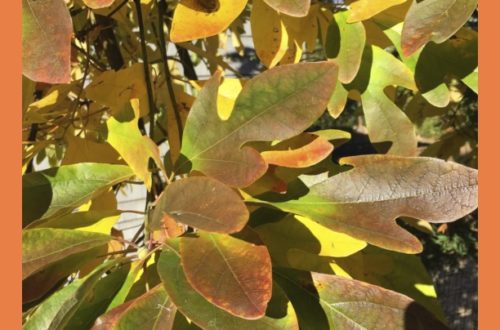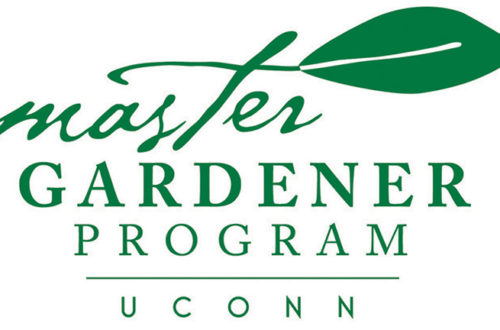JULY-AUG 2018 – It’s hardly a secret that The Ag Station is my favorite organization – but for all they contribute to science and society, many residents have no clue about what they do. At the very least, you – as a gardener and student of the natural world – should get acquainted with their work.
Some Station research projects are long-term, like the new crops program and tick and mosquito monitoring. Others are more focused, such as research into nanoparticles and biochar.
Here are some quick notes about several subjects being studied — truly a miniscule sampling of The Ag Station’s ongoing work at its New Haven, Hamden, Windsor and Griswold facilities.
You can look more closely at their research on any of the following, either on The Station’s website at ct.gov/caes or, better yet, at the upcoming Plant Science Day (PSD) at Lockwood Farm in Hamden on Wed., Aug. 8. There, subjects mentioned below (and plenty more) will be presented in greater depth in field plots, lectures, and by researchers. So bring questions, samples, and get ready for a very interesting day.
NEW CROPS FOR CONNECTICUT
The Ag Station serves the burgeoning number of small farmers in the state by running trials of high-value, niche crops; those that enjoy culinary popularity and can be marketed locally through farmers markets, roadside stands, local retail, and pick-your-own.
Determining which varieties do best here frees the farmer and the home vegetable gardener from having to do their own experimentation when faced with a dizzying number of options.
• Kabocha Squash
Kabocha means squash in Japan. We know it as a specific type of winter squash. There are more than 20 cultivars on the market including both regular and new smaller, personal-sized types. Trials in 2016 evaluated the yield and quality of 10 cultivars; including short-vined, long-vined, and personal-sized varieties.
After averaging results from growing sites in Griswold and Windsor, ‘Eclipse’ produced the greatest yields followed by ‘Sweet Mama’ and ‘Winter Sweet’.
• Okra
Okra’s long pointed seed pods are best picked young and immature, when they’re about 2-4″ long. Okra’s extremely drought resistant and grows best in hot weather. Eight cultivars were grown, with and without black plastic (the plastic helps keep it hot up here in the north). ‘Jambalaya,’ ‘Annie Oakley II’ and ‘Emerald Green’ all stood out. It makes it a nice ornamental plant as well.
• Brussels Sprouts
Related to other vegetables in the mustard family – including broccoli, cabbage, and cauliflower – Brussels sprouts are typically grown as an annual. The tiny cabbage-like axillary buds are harvested either by hand or by cutting the entire stalk for processing.
They grow best between 45-75°F with the highest yields at 60-65°F. Freezing doesn’t affect quality (it can make them sweeter). Sprouts that develop in hot weather often do not form compact heads and can be bitter. ‘Jade Cross E’ had the greatest yields (84 sprouts per plant), followed by ‘Dimitri’ (79 sprouts per plant).
• Pawpaws (Asimina triloba)
Shrubby trees native to our temperate woodlands, pawpaw seedlings need protective shade. Once established they prefer full sun. Their maroon, upside-down flowers require cross pollination from another unrelated pawpaw tree and are pollinated by flies and beetles.
Pawpaws are the largest edible native fruit (3-6″ long and weighing 5-16 oz.). The tasty fruit has a smooth, custard texture. Annual yields of four cultivars planted in 2002 have been recorded since 2013. Thus far, ‘Rebecca’s Gold’ and ‘Overleese’ have averaged the greatest yields (43 and 39 fruits per tree, respectively) with ‘Sunflower’ producing the largest fruit (6.9 oz/fruit).
Sheet Composting of Oak and Maple Leaves
Many of us have oak trees, whose leaves are known to be more resistant to decomposition than maple leaves. If we choose to sheet compost our vegetable gardens, and use oak instead of maple leaves, does that mean we’ll have decreased yields? Every autumn from 1995 to 2016, vegetable plots were layered with undecomposed oak or maple leaves that were then tilled into the soil. As it turns out, average yields of 12 vegetable crops over 22 years were pretty much the same with either type. One less thing for a gardener to worry about!
Southern Pine Beetle (SPB)
Dendroctonus frontalis has been a major pest of the timber industry in the south for years. It was discovered in Connecticut in March 2015.
Since this initial discovery, SPB has been detected in all counties except Tolland and Windham, and in six species of tree: white pine, pitch pine, Scots pine, red pine, Norway spruce and white spruce. It was thought that the beetle was not surviving our winters, but it may be … and research is ongoing to understand its potential impact in Connecticut.
Japanese Cedar Longhorned Beetle
Callidiellum rufipenne was first detected in Connecticut in 1998 after its larvae had bored into arborvitae in garden centers. It likes woody plants in the cedar family and has now spread throughout the state. Potted or unhealthy plants in the cedar family are probably now at risk of attack in
our garden centers and nurseries.
Viburnum Leaf Beetle
Pyrrhalta viburni, an alien Eurasian beetle, is a pest of wild and cultivated viburnum species. Both larvae and adults of this species eat the foliage of viburnum, sometimes killing plants. This pest was found only in the northern half of the state back in 2010, but is now reported in every county. In several locations, the beetle has killed wild viburnum species.
Other Hosts of the Lily Leaf Beetle
The invasive lily leaf beetle (Lilioceris lilii) eats Asiatic, Oriental and native lilies that grow in Connecticut. Both the larvae and the red adults of this Eurasian beetle eat the foliage and flowers, often killing cultivated plants wherever beetle populations are high.
Though it prefers Asiatic lilies, it has damaged wild lilies, such as the Canada lily (Lilium canadense) and the Turk’s-cap lily (L. superbum). Research continues into whether other native liliaceous species are tasty to the beetles.
Biological Control for Emerald Ash Borer
Emerald ash borer has decimated our ash trees, and it threatens white fringe tree (Chionanthus virginicus). Will we be able to find a biocontrol
Releases of two parasitic non-stinging wasps, Tetrastichus planipennisi and Oobius agrili in Middlebury and Prospect began in 2013. Since then, releases have been made in Cromwell, East Haddam, East Windsor, Hamden, Litchfield, Plymouth, Sherman, Simsbury and Weston.
Each release site receives the parasitic wasps for 2 years. After release, the next step is to determine if the wasps have established in the environment. Both have been found at the initial release site, and up to 2.5 miles away, strongly suggesting that the tiny wasps have established in Connecticut, and are spreading.
Biological Control for Hemlock Woolly Adelgid (HWA)
Hemlock woolly adelgid (Adelges tsugae) remains a serious forest and nursery threat to native eastern and Carolina hemlocks. First detected in Connecticut in 1985, it has caused huge losses. Severe winters from 2014-2016 greatly reduced populations of HWA in the Connecticut landscape, giving hemlocks a statewide reprieve from adelgid attack.
Large releases of the tiny ladybeetle Sasajiscymnus (formerly Pseudoscymnus) tsugae, native to southern Japan, were made here in 1995 and 2007. It’s an efficient HWA predator that’s now commercially available to the public to combat the resurgence of HWA after milder winters. There are plenty of other stressors on hemlocks, though – heat, drought, and other pests – making hemlock recovery problematic despite this voracious little ladybeetle.
Biological Control for Mile-a-Minute Weed (MAM)
Yet another threat to native plant diversity is mile-a-minute weed (MAM). Persicaria perfoliata (formerly Polygonum perfoliatum) was initially reported in Connecticut in 2000. This invasive grows quickly and has been reported in 47 towns so far. A tiny weevil, Rhinoncomimus latipes, imported from China to feed and reproduce exclusively on MAM, was first released in Connecticut in 2009.
In collaboration with UConn, more than 49,000 weevils have been released and monitored since 2009, in the most heavily infested 24 towns. Weevils have survived Connecticut winters, adapted to challenging environmental conditions and spread widely in many areas to feed on MAM.
– Anne Rowlands
CAES offers a number of free services to Connecticut residents and businesses. To contact the Insect Information Office, Plant Disease Information Office, or Soil Testing Laboratory, go to ct.gov/caes and look for them in the navbar on the left.





